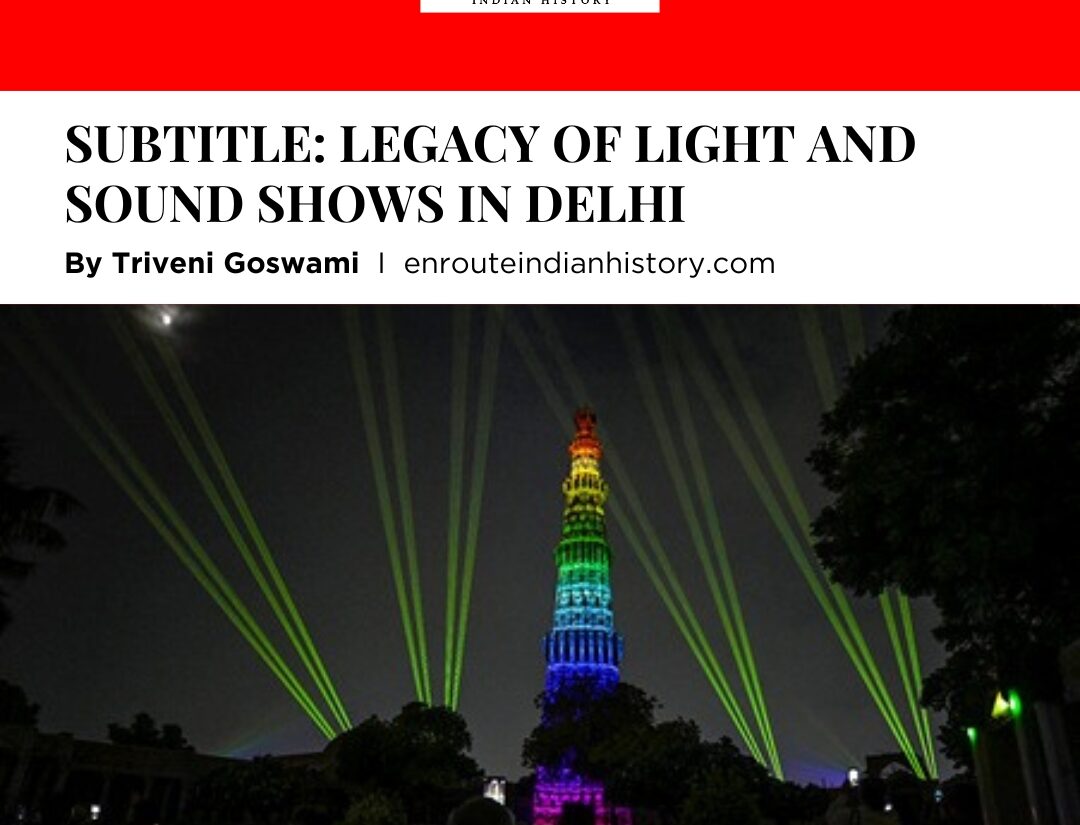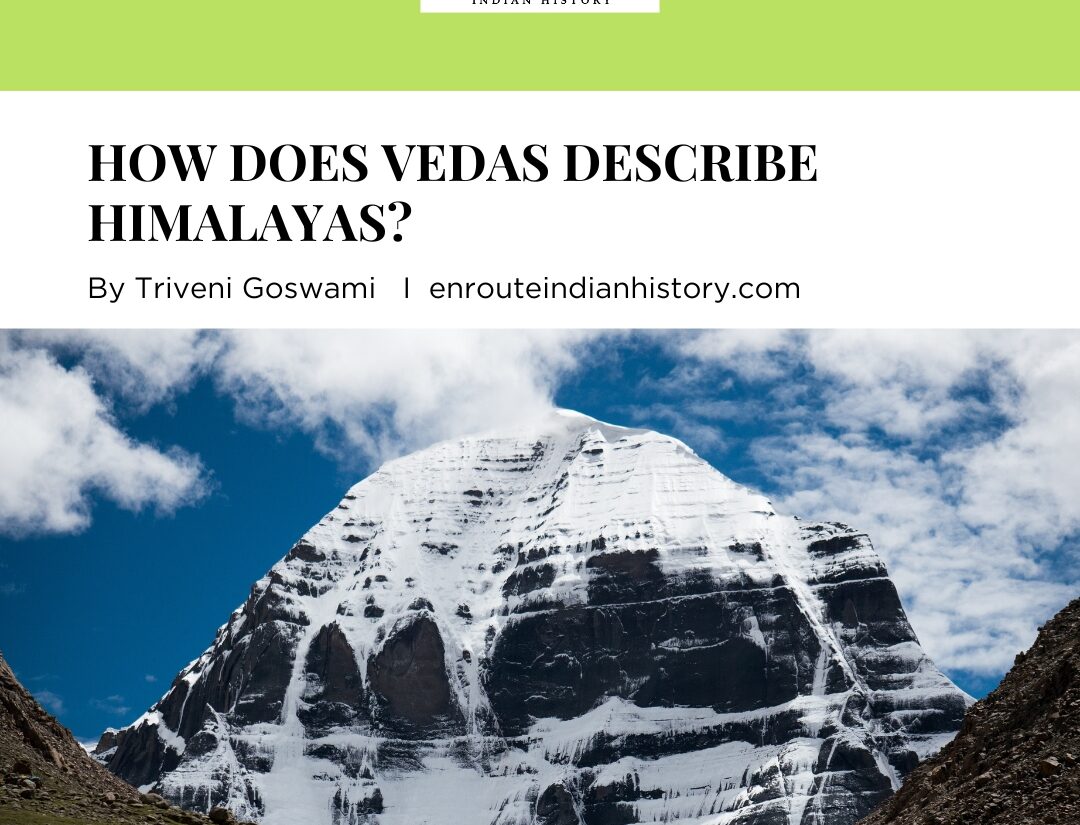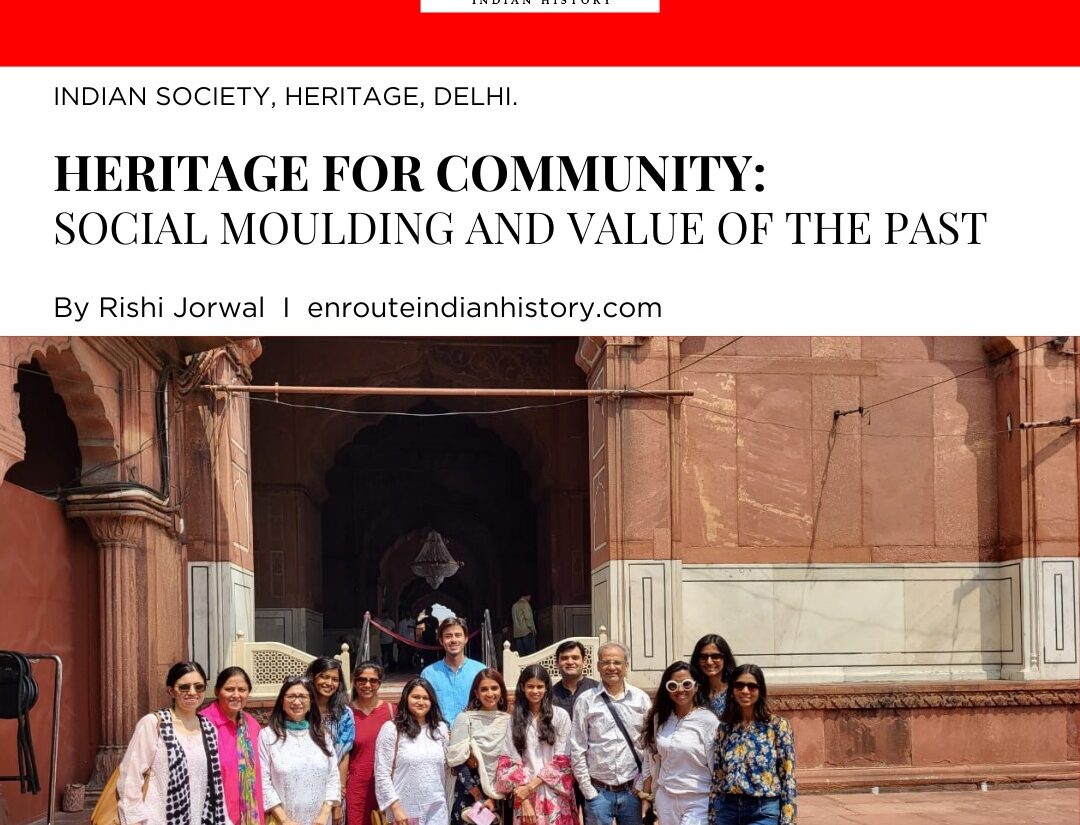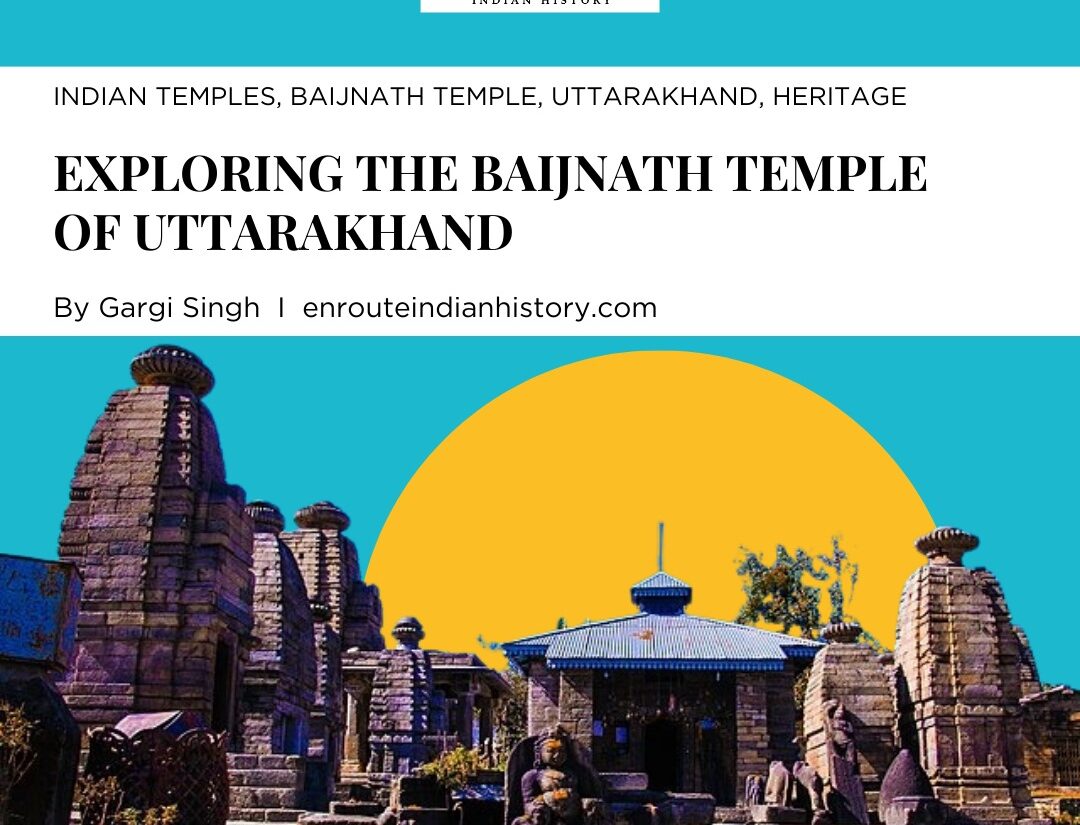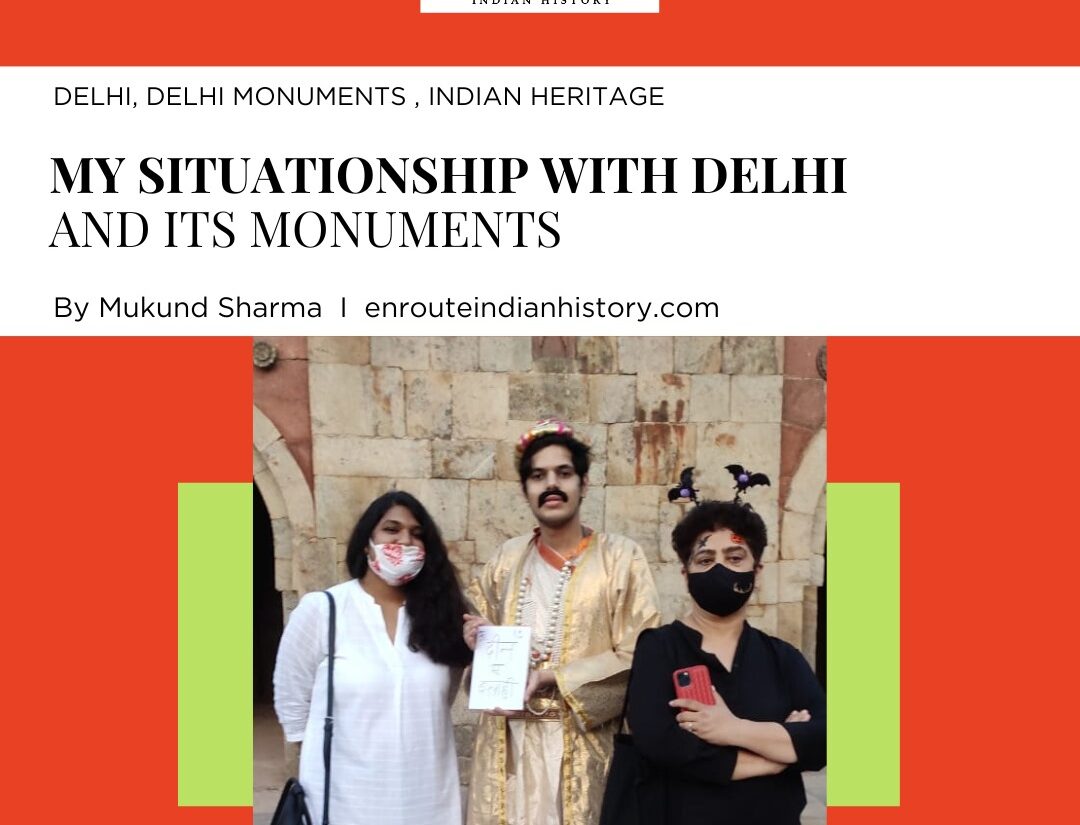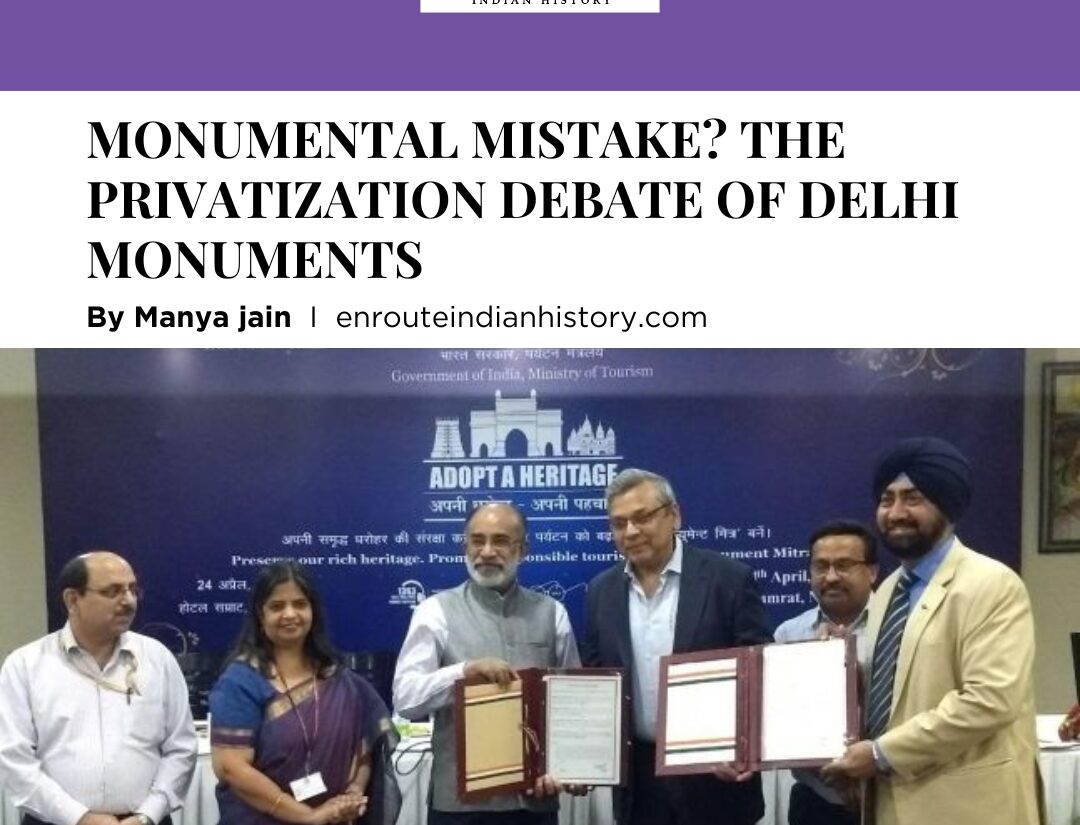
Monuments:
In an era where cultural heritage and historical preservation are gaining unprecedented attention, the privatisation of monuments emerges as a contentious yet intriguing solution to the challenges faced by public management. As governments worldwide grapple with limited resources and escalating maintenance costs, the shift towards involving private entities in the stewardship of these invaluable sites offers a promising avenue for ensuring their longevity. However, this transition also raises important questions about accessibility, commercialization, and the safeguarding of our shared heritage. The desire to protect historical monuments in India, especially in the capital city of Delhi, is facing a stiff challenge from the possibility of corporations defacing heritage structures while proclaiming to be their saviours.
Conservation vs commercialisation
Delhi, a city steeped in history, is home to a myriad of monuments that stand as testaments to its rich and varied past. These monuments, which include ancient ruins, grand Mughal structures, and colonial edifices, are invaluable cultural assets. However, the management of these sites involves balancing their preservation with the demands of modern tourism and commercialization. The conservation of Delhi’s monuments is crucial for several reasons. Firstly, these sites hold immense historical significance. For example, the Qutub Minar, built in the early 13th century, not only represents the architectural prowess of the era but also marks the beginning of Muslim rule in India. Humayun’s Tomb, a UNESCO World Heritage site, is a precursor to the Taj Mahal and showcases the architectural brilliance of the Mughal era. The Red Fort, another UNESCO site, has been a symbol of power and the setting for pivotal events in India’s history, including the first speech by India’s first Prime Minister, Jawaharlal Nehru, at independence.
These monuments also embody cultural heritage, representing the artistic and cultural achievements of different periods. They serve as educational resources, providing insights into historical events, architectural styles, and cultural practices that have shaped the city. The preservation of these sites ensures that future generations can learn from and appreciate the rich tapestry of Delhi’s history. Environmental factors are a significant challenge in the conservation of Delhi’s monuments. Pollution from the city’s urban development accelerates the weathering of stone structures. Acid rain, a byproduct of industrial emissions, can erode intricate carvings and weaken structural elements. Additionally, natural disasters such as earthquakes pose risks to these ancient structures.
Human activities further complicate conservation efforts. Vandalism, littering, and inappropriate tourist behavior can cause physical damage to the sites. For instance, graffiti on the walls of the Qutub Minar complex and the defacement of historical artifacts at other sites illustrate the detrimental impact of human negligence. Moreover, resource constraints often hinder effective conservation. Limited funding and resources can lead to neglect and deterioration of these invaluable structures. The Archaeological Survey of India (ASI), responsible for maintaining these monuments, often faces budgetary limitations that restrict comprehensive conservation efforts.
On the other hand, commercialization brings both opportunities and challenges. On the positive side, tourism generates significant revenue. For instance, the Qutub Minar complex, Humayun’s Tomb, and the Red Fort attract millions of visitors annually, contributing to the local economy. This influx of tourists creates job opportunities in the hospitality and service sectors, boosting economic growth. Improved infrastructure resulting from commercialization, such as better roads, signage, and facilities, makes these sites more accessible and enhances the overall visitor experience. However, commercialization can have adverse effects. Overcrowding is a major concern, as excessive tourist numbers can cause wear and tear on the monuments and their surroundings. The commercialization of heritage sites often leads to the loss of their historical and cultural authenticity, transforming them into mere tourist attractions. For example, the commercialization of the Red Fort area, with numerous shops and vendors, detracts from the site’s historical ambiance and significance.
Increased commercial activities can also lead to environmental degradation. Pollution from nearby commercial enterprises, waste from tourists, and unregulated development can harm the delicate balance required for the preservation of these sites. The Taj Mahal, though not in Delhi, is an example of how industrial pollution and tourism pressures can severely impact a heritage site.
Case Studies: Commercialization and Privatization Debates
Qutub Minar Complex
The Qutub Minar complex, a UNESCO World Heritage site, has experienced significant commercialization due to its popularity as a major tourist attraction. The Archaeological Survey of India (ASI) has managed this influx by implementing a regulated ticketing system, which generates substantial revenue that is reinvested in conservation efforts. This system helps control visitor numbers and manage the wear and tear caused by high footfall. However, debates have emerged regarding the privatization of such heritage sites. In 2018, the Indian government launched the ‘Adopt a Heritage’ scheme, which allows private companies to adopt and maintain heritage sites. The Qutub Minar complex was one of the sites proposed for adoption. Proponents argue that private investment can lead to better maintenance and enhanced visitor facilities, while critics worry about the potential commercialization overshadowing the site’s historical significance and authenticity. The involvement of private entities in managing heritage sites has raised concerns about the prioritization of profit over preservation, with fears that commercial interests might compromise the cultural and historical integrity of these monuments.
Humayun’s Tomb
Humayun’s Tomb, another UNESCO World Heritage site, serves as an exemplary case of balancing conservation with community benefits. The Aga Khan Trust for Culture (AKTC) has been instrumental in its restoration, ensuring that the project not only preserves the monument but also enhances the quality of life for the surrounding community. Aga Khan Trust for Culture director-general Luis Monreal said the renovation at Humayun’s Tomb has helped alleviate the suffering of marginalized families living in the Hazrat Nizamuddin Basti.
The Nizamuddin Urban Renewal Project, spearheaded by AKTC, has provided employment to master craftsmen while addressing broader community needs. The project includes interventions in health, education, sanitation, cultural revival, livelihood generation, street improvements, housing improvement, and landscaping of neighborhood parks, significantly benefiting the residents of Hazrat Nizamuddin Basti. This approach ensures that conservation efforts are not isolated but integrated with the community’s development, creating a sustainable model that preserves cultural heritage while promoting social welfare.
Such efforts contrast sharply with the more commercially driven approaches seen elsewhere, highlighting the potential of community-focused conservation to provide holistic benefits. This model of integrating heritage conservation with community development could serve as a blueprint for future projects, ensuring that the preservation of historical sites goes hand in hand with the enhancement of local livelihoods and living conditions.
(Source: https://the.akdn/en/resources-media/resources/publications/humayuns-tomb-sunder-nursery-hazrat-nizamuddin-basti)
Red Fort
The Red Fort, a symbol of India’s independence, faces intense commercialization pressures due to its central location and immense popularity. The area around the fort is heavily commercialized, with numerous shops and vendors catering to the high volume of tourists. This commercialization has led to environmental degradation and a loss of the site’s historical ambiance.
Under the scheme of “Adopt a Heritage” in September 2017, The Dalmia Bharat Group secured the rights to adopt the Red Fort in a $3.7 million deal for five years. This decision was met with opposition from Indian historians, who feared the propagation of “false or unproven interpretations of particular structures in the complex” to attract tourists.
The controversy deepened when an article revealed a nationalistic agenda behind the company’s branding efforts. Vishnu Dalmia, the patriarch of the Dalmia Bharat Group, was a key figure in one of the most significant anti-Muslim, Hindu-nationalistic incidents of the early 1990s. Additionally, the group’s lack of experience in conserving monuments further fueled the debate. Opposition parties condemned the government’s decision, questioning its ability to maintain a national monument and suggesting potential profiteering by the company. The debate is further fueled by concerns about access, with fears that privatization might restrict public access or increase entry fees, making it less accessible to the general population.
Balancing the conservation and commercialization of Delhi’s monuments is a complex but essential task. A multifaceted approach, including sustainable tourism practices, community involvement, and strict regulatory frameworks, is required to ensure these historical treasures are preserved for future generations while contributing to the local economy. Successful examples, such as the restoration projects at Humayun’s Tomb and the regulated access at the Qutub Minar complex, demonstrate that it is possible to find a middle ground that respects both preservation and commercial interests.
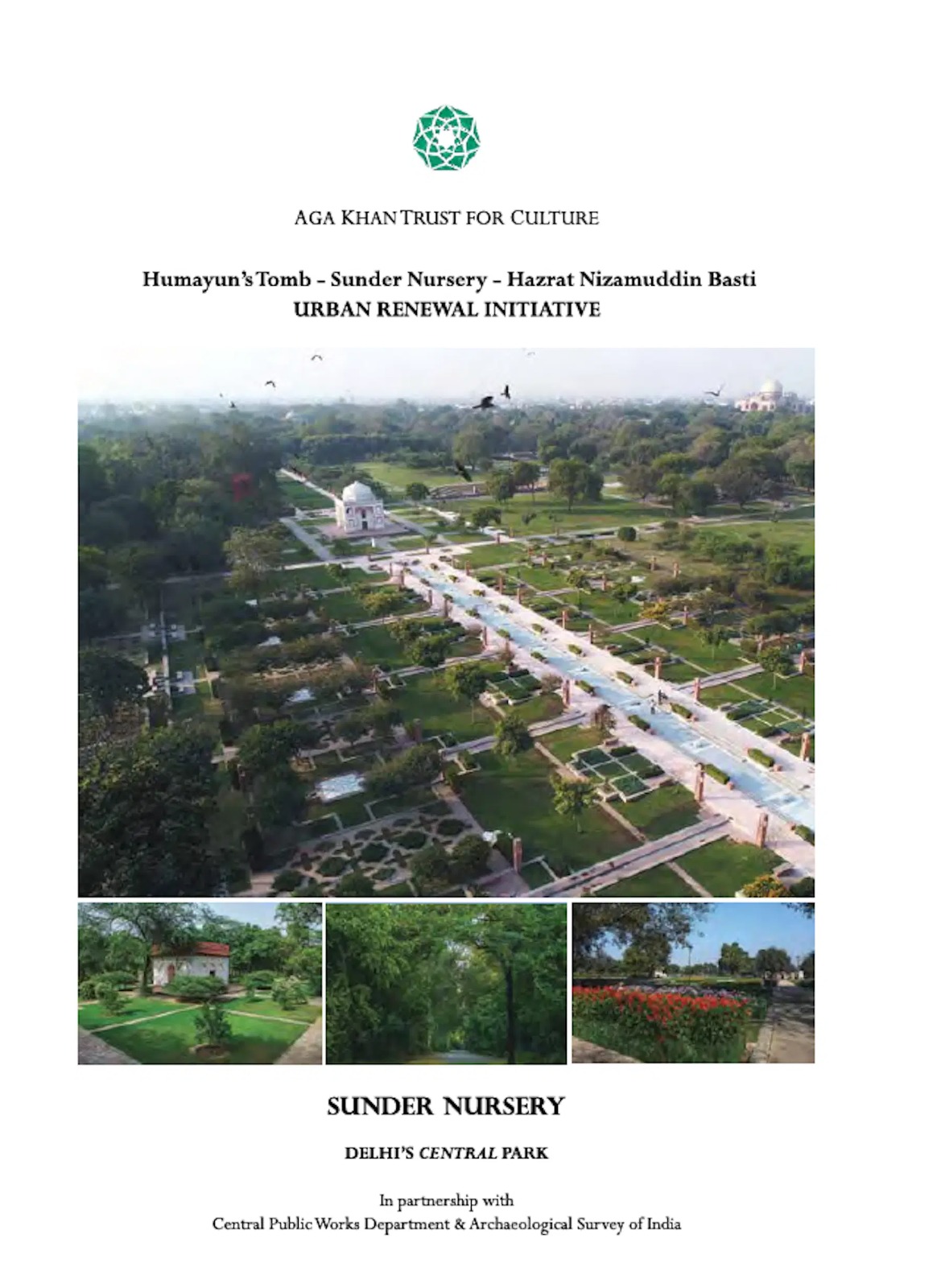
(source: India Today; Tourism minister announcing the MoU with Dalmia Bharat Group for the upkeep of Delhi’s Red Fort)
Sources
https://thediplomat.com/2018/05/the-privatization-of-heritage-why-corporate-funding-to-restore-monuments-worries-india/
https://whc.unesco.org/en/list/233/
https://the.akdn/en/resources-media/whats-new/spotlights/humayuns-tomb-conservation-completed
https://www.thehindu.com/news/cities/Delhi/humayuns-tomb-renovation-helping-marginalised-families/article5130049.ece
https://economictimes.indiatimes.com/defaultinterstitial.cms
- April 18, 2024
- 5 Min Read
